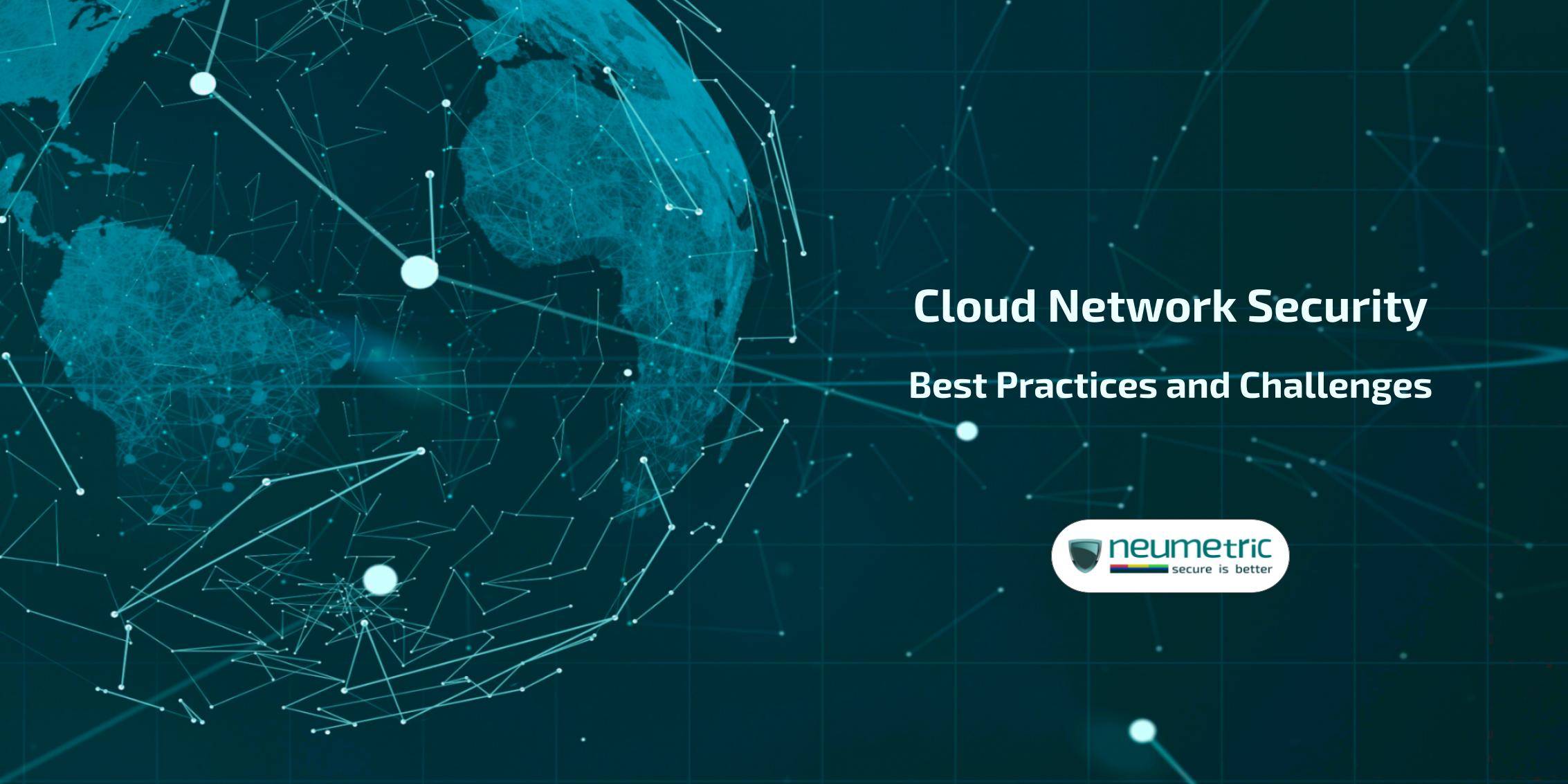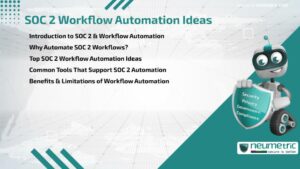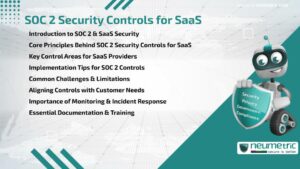Table of Contents
ToggleCloud Network Security: Best Practices & Challenges
Introduction: Navigating the Complex Cloud Security Landscape
As digital transformation accelerates, cloud computing has emerged as the backbone for contemporary business operations. However, embracing the cloud necessitates a vigilant security strategy to protect sensitive data. This journal serves as a roadmap, navigating enterprises through optimal cloud security practices while adeptly tackling omnipresent challenges.
From encryption protocols to access controls, the pillars upholding robust cloud security needs to be explored. Tangible strategies empower IT teams to fortify defenses against unrelenting cyber threats. By comprehending the complex interplay between cutting-edge security technology & evolving attack vectors, organizations can proactively safeguard cloud data integrity.
Securing the Digital Bastion: The Intricacies of Cloud Data Encryption
Encryption warrants unparalleled attention among cloud security best practices. Fundamentally, encrypting data transmutes readable information into coded gibberish. However, not all encryption is created equal. Usage of symmetric & asymmetric encryption algorithms highlights how confidentiality & integrity get woven through encryption keys. For utmost resilience, a multifaceted key management strategy balances robustness alongside usability.
With clouds transcending geographic boundaries, encryption-in-transit through SSL/TLS binding becomes paramount. Holistic data security obligates extending encryption-at-rest using mechanisms like file/folder encryption, tokenized fields or homomorphic encryption across entire cloud databases.
By comprehending encryption’s multilayered apparatus across transit, storage infrastructure & comprehensive databases, organizations can proactively safeguard sensitive data against breaches.
Access Governance: Establishing a Secure IAM Framework
Identity & access management [IAM] constitutes the guardian gates to cloud data. IAM disciplinedly vets user identities & judiciously delineates access permissions. IAM’s critical components can be broken down into:
- User Provisioning: Onboarding/offboarding staff while creating strict user identities.
- Access Controls: Configuring precise, least-privilege access rules & role-based permissions for accessing apps/data.
- Governance: Reviewing policies continually, logging activity, adjusting roles.
- Single Sign-On [SSO]: Enabling one-step access across multiple apps & services through federated identity.
- Multi-factor Authentication [MFA]: Fortifying sign-in using secondary credentials like one-time passwords.
By instituting a watertight IAM framework attuned to an organization’s structure & risk profile, the gates to cloud data remain firmly guarded against infiltration.
Monitoring: The Vigilant Eyes Safeguarding Cloud Networks
Around-the-clock network monitoring constitutes the vigilant eyes, constantly scanning the digital perimeter. Event logs get aggregated into Security Information & Event Management [SIEM] solutions for centralized monitoring.
SIEMs use behavioral analytics to set baselines & trigger alerts for anomalous activities that could signify threats. Machine learning algorithms further bolster threat detection accuracy within acceptable false positive rates. Threat Intelligence [TI] integrations additionally enrich context for security teams investigating triggers.
Effective monitoring relies on logs furnished at multiple levels – network, hardware, OS, applications. These form the digital breadcrumbs that reveal granular insights into different components. Holistic coverage then enables reconstructing the kill chain behind threats.
By persistently monitoring multi-layer logs, anomalies get rapidly spotted so that security teams can promptly respond & undertake containment measures.
Fortifying Access Credentials with MFA
In adeptly thwarting unauthorized access, Multi-Factor Authentication [MFA] warrants serious consideration. MFA combats reliance solely on passwords which remain vulnerable once compromised. It integrates a second factor – either using a separate physical channel like SMS, hardware token or biometric characteristic for verification.
SMS-based one-time passwords [OTP] constitute the simplest form of MFA to implement although interception risks necessitate stronger alternatives. App-based verification & hardware tokens sidestep this while biometric authentication using fingerprint, iris or facial scans taps unique biological traits.
The optimal combination of cost, usability & security makes MFA policies organization-specific. Building contextual rules can also combat user inconvenience like enforcing MFA during risky scenarios – unfamiliar locations/devices, sensitive data access etc.
By furnishing robust secondary credentials, MFA significantly bolsters identity assurance. It constitutes a potent weapon for combating external threats & insider risks.
Protection Against Data Breaches: Impact & Preventative Strategies
Despite exhaustive precautions, data breaches remain an inevitability. Their anatomy reveals cyberattacks growing astonishingly sophisticated, leveraging advanced malware or stealthy insiders. Still, human errors & configuration oversights represent the Achilles’ heel in sixty percent of incidents.
This segues into fortification strategies prioritizing privileged access management, network segmentation & device security. Data-centric protections like rights management additionally curtail unauthorized data usage even post-theft. Overall, organizations need defense-in-depth with controls spanning identity, network, applications & information.
Breach response further necessitates incident response planning & using cyber insurance to offset costs. By learning from past incidents & proactively strengthening defenses, organizations reinforce their resilience against similar occurrences.
Enhancing Business Continuity Through Cloud Security
Beyond safeguarding data, robust cloud security directly bolsters overall business continuity. The transformations wrought by COVID-19 serve as an irrefutable testimony. Organizations with already secure & agile cloud infrastructure smoothly activated remote operations through VPN access & SaaS apps. Meanwhile, legacy tech stack forced others into panicked cloud migrations, racking up avoidable expenses & downtime.
Holistic cloud security allows judiciously onboarding technologies like SD-WAN, SASE & ZTNA for hybrid or permanent remote connectivity without additional risk. As disaster recovery [DR] gets integrated alongside mainstream operations, organizations gain increased overall resilience.
By proactively designing cloud security for continuity, organizations can count on unhindered operations while rivals grapple with disruptions.
Adapting Security Strategies Against Evolving Threats
With cloud threats continuously evolving, security strategies warrant periodic reassessment using threat intelligence. Security teams can tap managed threat intelligence feeds containing up-to-date indicators of compromise curated by experts. Integrating threat intel context when investigating alerts improves detection efficacy by thirty-eight (38) percent.
Threat intelligence aids proactive assessments revealing vulnerabilities against trending attack tactics like supply chain attacks. Organizations can accordingly validate controls against adversary simulations modeling realistic attacks. Repeat testing uncovers additional weaknesses ripe for remediation before incidents strike.
Continuous attack surface management further accounts for fluid assets & permissions. It proactively plugs security gaps that new products, merged entities & workforce churn inevitably introduces.
Overall, continuously ingesting threat intelligence guarantees security strategies stays tuned to combat contemporary threats.
Legal Compliance: Avoiding Cloud Security Pitfalls
Despite advantages, public cloud adoption carries compliance risks that policies often overlook. For instance, excusing cloud resources from security baselines developed for on-prem assets becomes myopic. Relying solely on vendor assurances rather than validating controls first-hand is equally irresponsible. Such oversights grant leeway for non-compliance around data handling, retention or breach notification mandates.
Critical precautions such as assessing the provider’s responsibility matrix, including clouds under third-party auditor reviews, contractually addressing liability apportioning, etc. must be undertaken by organizations to avert compliance failures. Tightening deployments against configuration drifts using automation further adds rigor.
Overall, while convenience tempts control leniency, compliance diligence remains mandatory. Organizations must invest equal, if not more caution around cloud security given the heavy consequences of regulatory punishment.
Managing Third-Party Risks in Cloud Environments
The cloud’s fundamental fabric relies heavily on outsourcing infrastructure & software needs to external providers. However, dependence on third parties significantly expands attack surfaces. For instance, coding errors or poor software hygiene by vendors propagate through products deployed by customers. Platform architectures employed by cloud providers could themselves suffer from innate defects enabling threats like Spectre, Meltdown.
Shared responsibility models that split security obligations between vendors & clients also often witness confusion leaving accountability gaps. Reliance on Support teams introduces social engineering risks highlighted by recent outages.
Combating third-party risks obligates extensive supply chain analysis & vendor assessments before onboarding. Continuous monitoring of administrator activity, regular vendor audits & contingency planning for outages further hedge associated uncertainty. By comprehensively scrutinizing & responsibly managing external providers, organizations reinforce trust assurance within unavoidable cloud dependencies.
The Promise of AI & ML for Advancing Cloud Security
Artificial Intelligence [AI] & Machine Learning [ML] constitute leading beacons guiding future cloud security evolution. ML algorithms enhance threat detection efficacy within SIEM solutions by automatically distilling patterns from billions of data points. Such capabilities accelerate breach discovery while boosting threat hunting productivity by over thirty-five (35) percent. ML further assists sorely overburdened security teams via automation around alert triaging, initial investigation etc.
Meanwhile, AI spearheads proactive cloud attack surface management using graph databases for mapping assets & access relationships. Continuously updated attack graphs help teams perform penetration testing & secure configurations.
The vision of AI/ML autonomous security operations is also steadily materializing. Chatbots now furnish frontline analyst support with automated playbook responses or document retrieval. We are witnessing the dawn of resilient cloud security guided by artificial guardians.
The Zero Trust Answer to Cloud Security Vulnerabilities
As cloud environments grow more complex, implicit trust assumptions in traditional security models incur unacceptable risk. The zero trust framework addresses such vulnerabilities using identity-centric isolation & access control.
It mandates stringent user/device validation overriding assumptions of internal benevolence. Software-defined microperimeter enclosements provision granular least-privilege access to resources. All sessions undergo continuous monitoring & analysis for threats using AI before adaptation.
By fundamentally eliminating the concepts of trust & network visibility, zero trust architecture thwarts attacker lateral movement. Confinement using stealthy two-way tunnels instead of VPNs further camouflages critical assets.
Despite some usability challenges, the zero trust approach constitutes a game-changing paradigm shift. It eradicates entire classes of risks that perimeter-focused & cloud-native security models struggle with.
Safeguarding Distributed Edge Environments
Edge computing’s exponential growth warrants reassessing cloud security priorities as distributed infrastructure multiplies attack surfaces. The edge remains perilously distant from the physical & policy security of controlled data centers. Numerous devices now reside outside firewalls, highlighting risks from inadequate patching, misconfigurations & unvetted code.
A framework prioritizing measurable safeguards for edge security needs to be adopted. It entails classifying assets, estimating protection levels & tolerable downtime. Deploying hardware-rooted integrity verification, encryption & attestation then ensures resilient fundamentals. Further complementing with mesh networks, blockchain consensus & decentralized detection distributed evenly combats compromise.
The guided shift from risk-unaware to risk-adaptive mindsets steers edge deployments onto robust security footing as attack surfaces widen. It paves the way for securely harnessing the edge’s formidable potential while evading neglect-driven threats.
Conclusion: An Ever-Evolving Security Journey
Cloud security constitutes an intricate domain warranting unrelenting diligence against ethical adversaries. Although expounded techniques provide potent safeguards, realization requires tailored & tactical implementation. Beyond configuring controls, success relies on cultivating intuitive security thinking across teams.
As cloud-driven business evolution continues outpacing threat mitigation maturity, organizations must strive for resilience through agility. Preparedness to dynamically adapt policies as technology & regulations co-evolve remains imperative in navigating uncertainties. Eventually, integrating security within business functions using DevSecOps culture promises better outcomes than playing catch-up.
By comprehensively assimilating this guide’s insights, organizations can meaningfully advance on the cloud security journey. Mastering the balancing act around productivity & protection better equips enterprises against capricious threats endangering data. With vigilance & vision, business innovation need not come at the cost of amplified risk. The future remains one where prosperity & security can indeed harmoniously coexist.
Frequently Asked Questions [FAQ]
Why is data encryption such a crucial aspect of cloud network security & how does it protect sensitive information?
Data encryption is like the digital equivalent of a fortress wall. It takes sensitive data & transforms it into an unreadable code, making it practically indecipherable to anyone trying to sneak a peek. It’s not just a precaution; it’s the shield that stands between valuable information & the potential threats lurking in the digital shadows.
Can you break down the role of Multi-Factor Authentication [MFA] in layman’s terms? How does it go beyond just passwords?
Imagine Multi-Factor Authentication [MFA] as the vigilant bouncer at an exclusive club, elevating security beyond mere passwords. Your initial invite, the password, gets you to the door, but MFA adds an extra layer of verification sophistication. It could be a fingerprint scan, a one-time code on your phone or even facial recognition – a second nod that asserts, “Yep, this person is legit.” This additional step not only safeguards your digital entrance but adds a robust shield against unauthorized access, making it significantly tougher for potential intruders to breach your digital fortress. So, in essence, MFA becomes the VIP pass to your online world, reinforcing the boundaries & ensuring only the rightful user gains access to sensitive information & digital domains.
How does the Zero Trust Security Model shake up the traditional approach to cybersecurity & why should organizations consider adopting it?
Zero Trust is like the ‘trust but verify’ of the digital world. Instead of assuming everything inside your network is safe, it questions & verifies every user & device. It’s a game-changer, especially in an era where cyber threats are getting sneakier. By not taking anything for granted, organizations add an extra layer of resilience against potential breaches.





